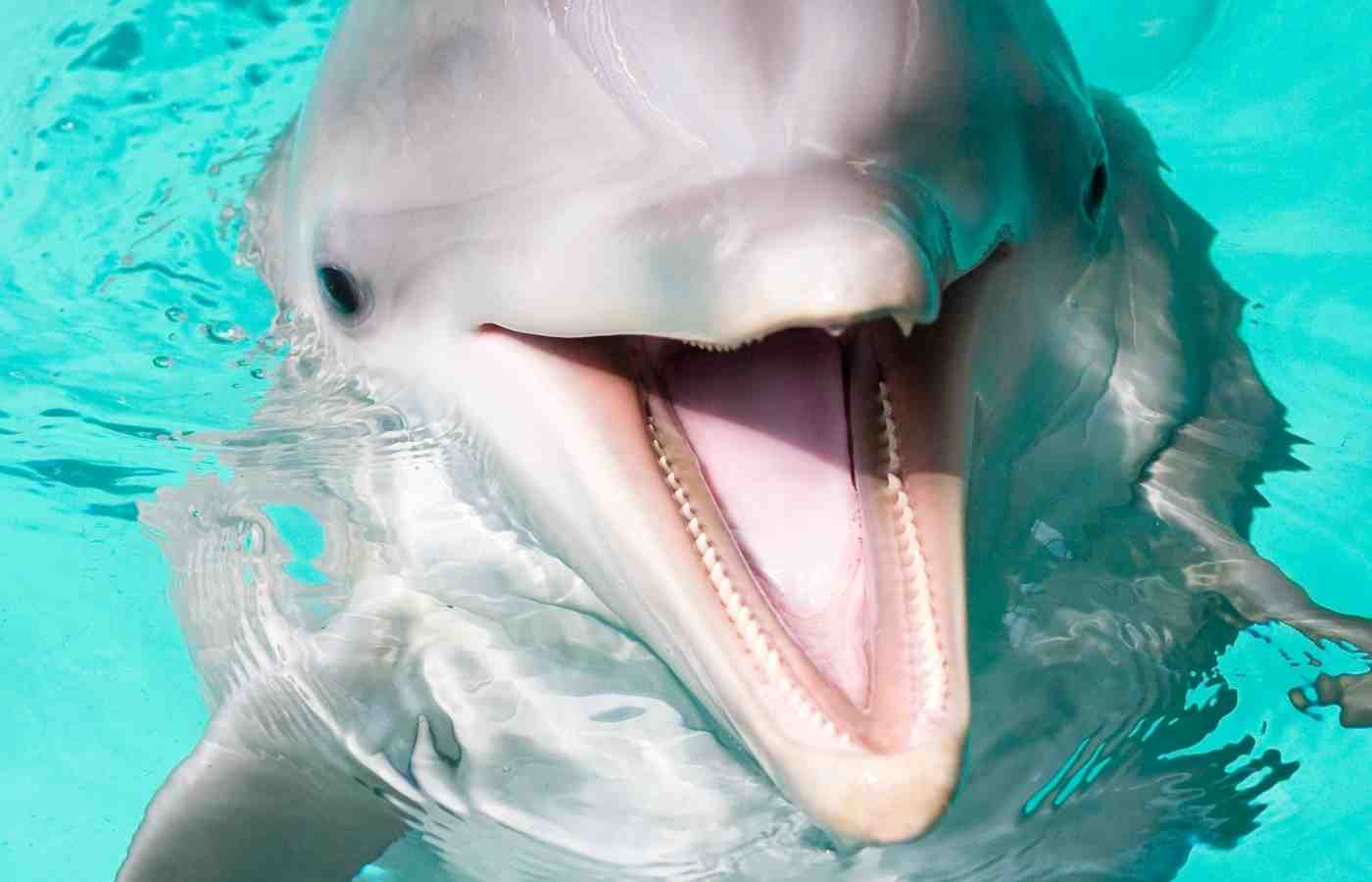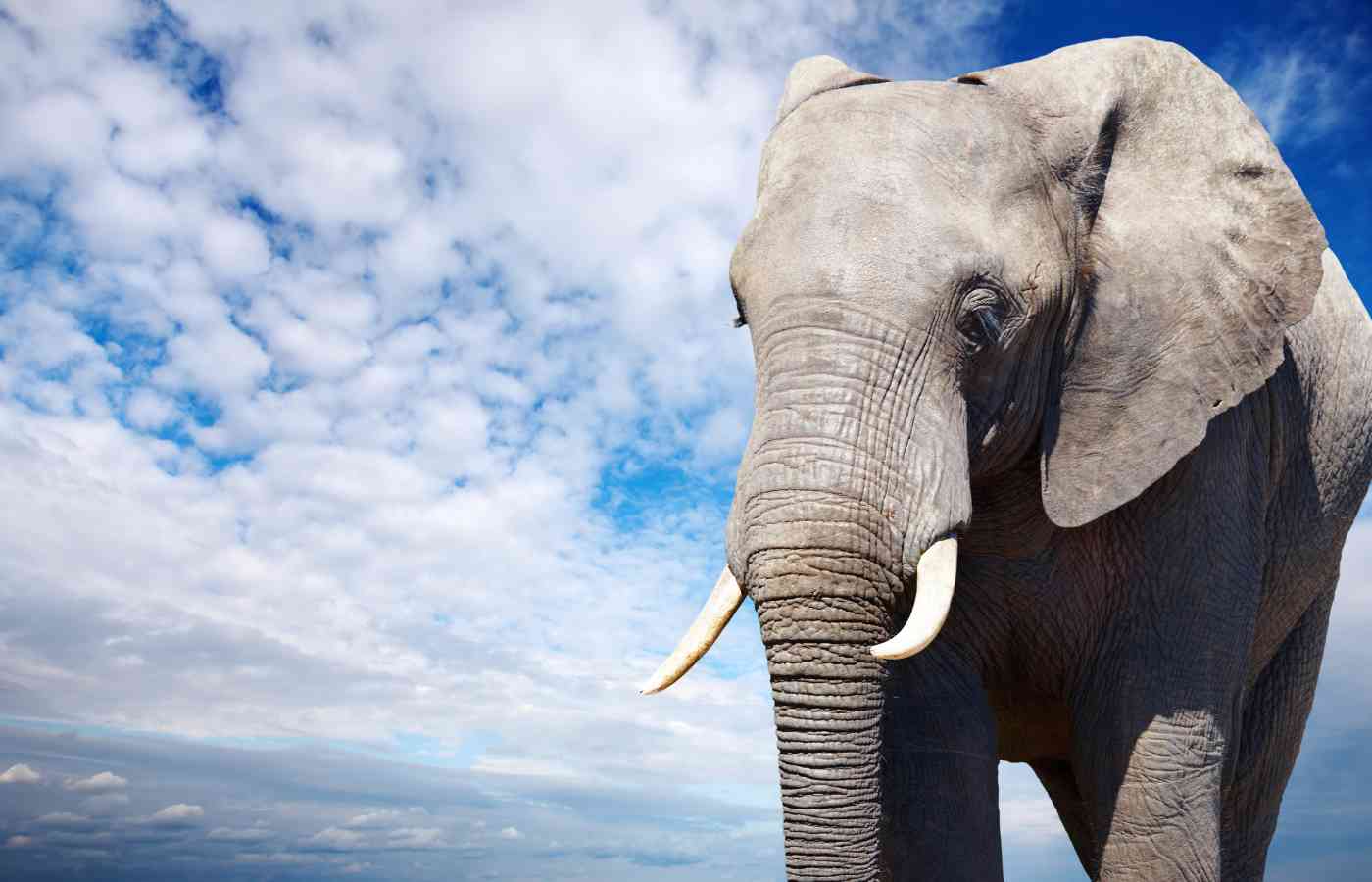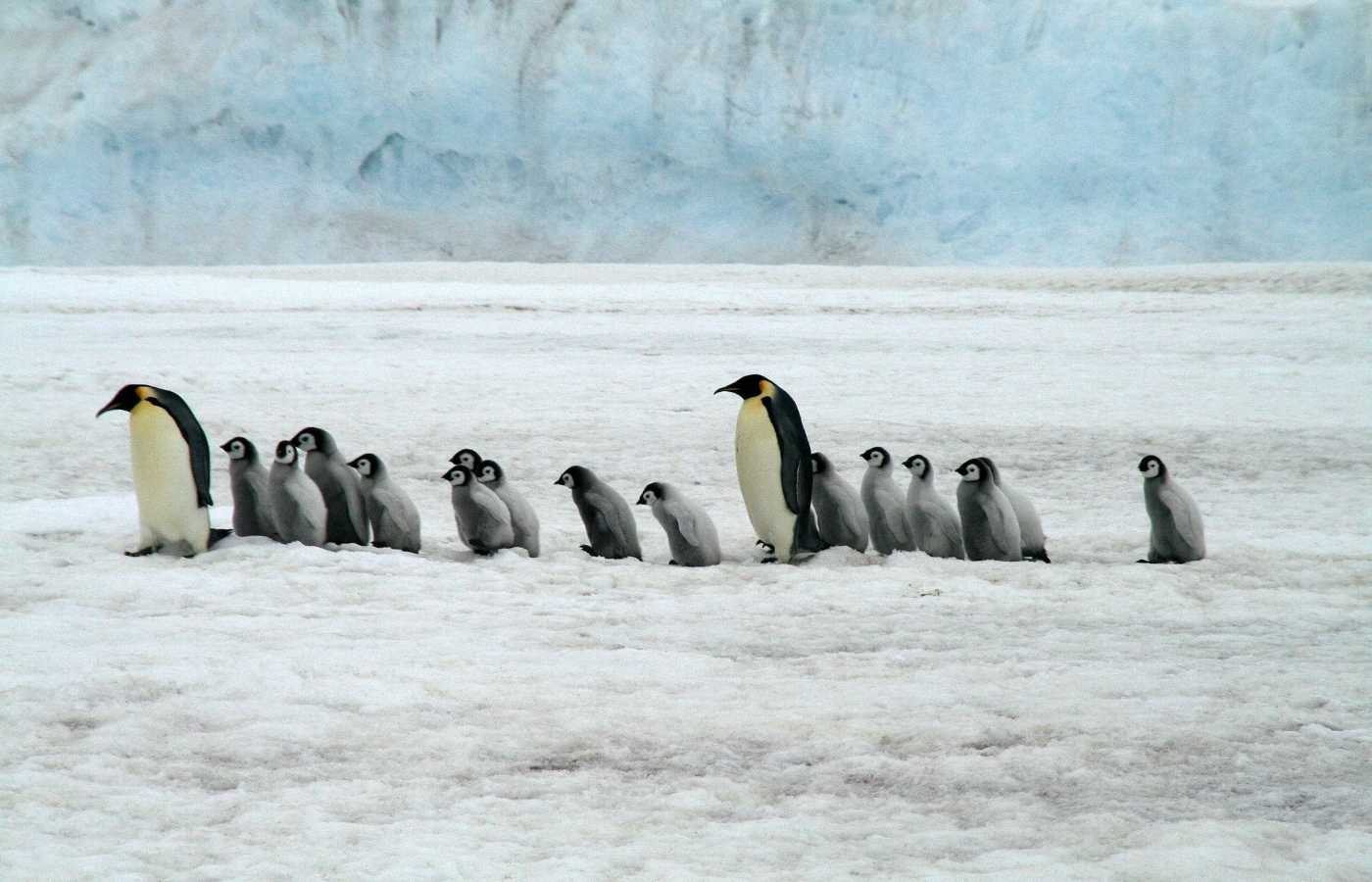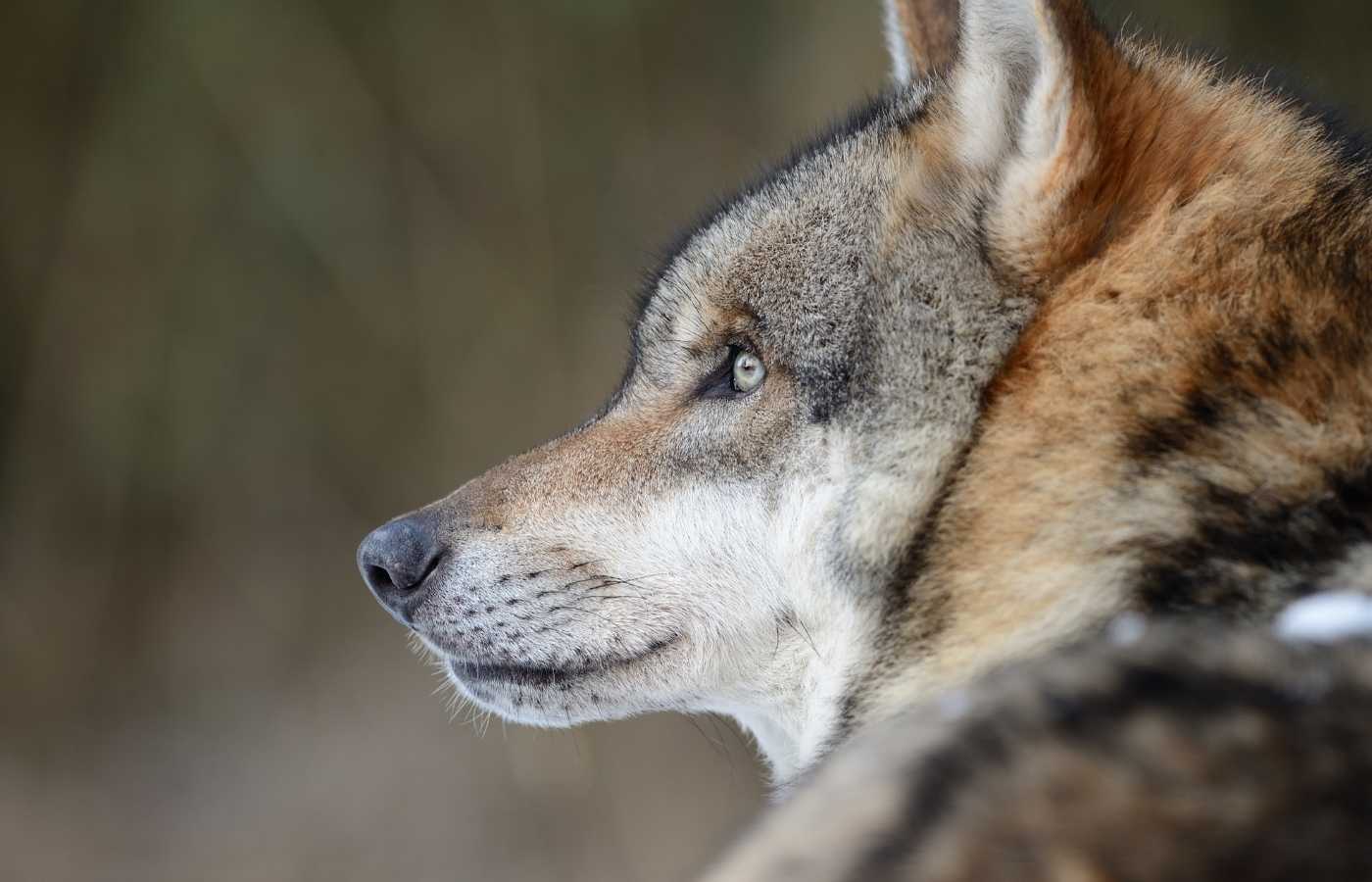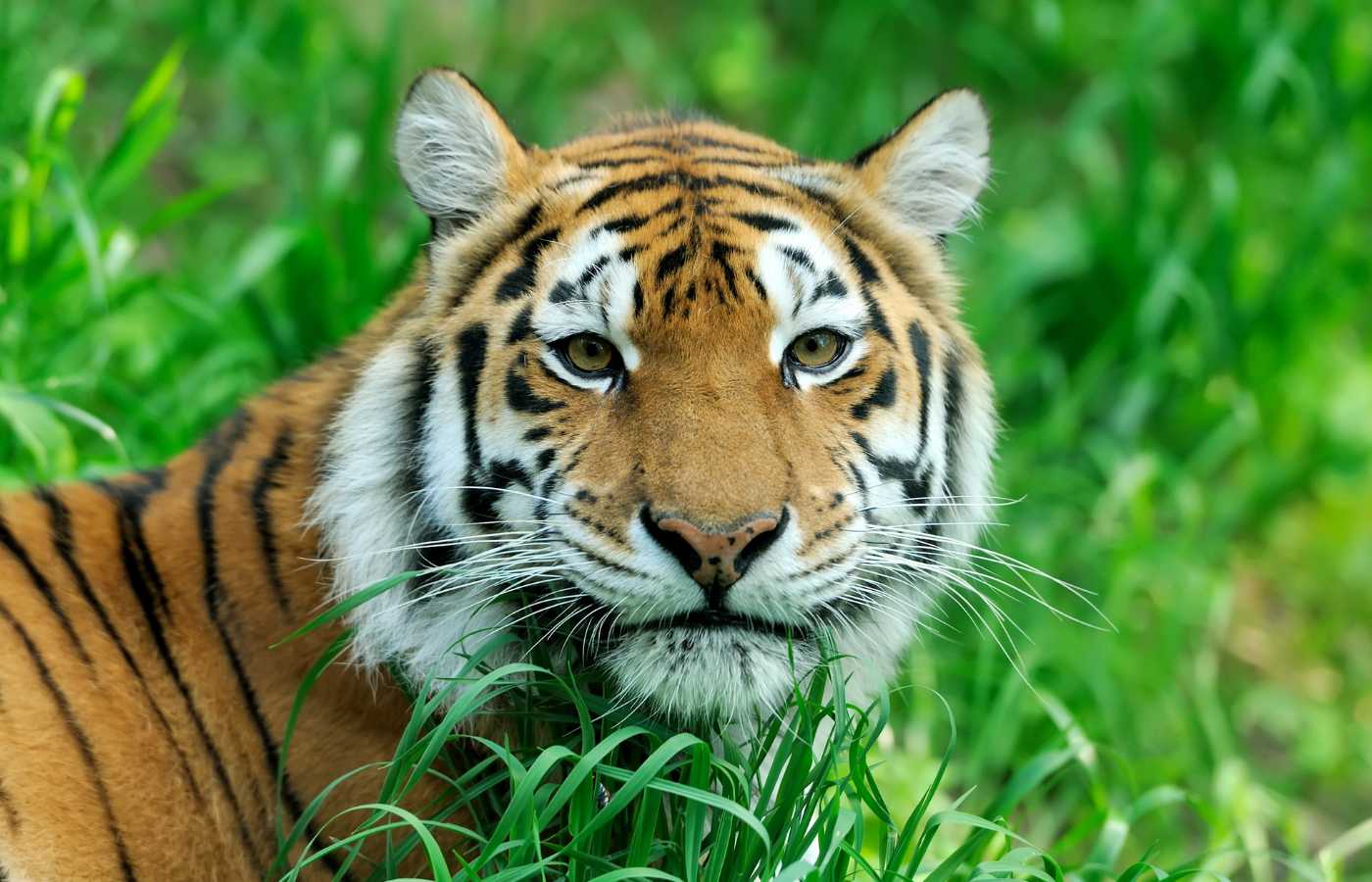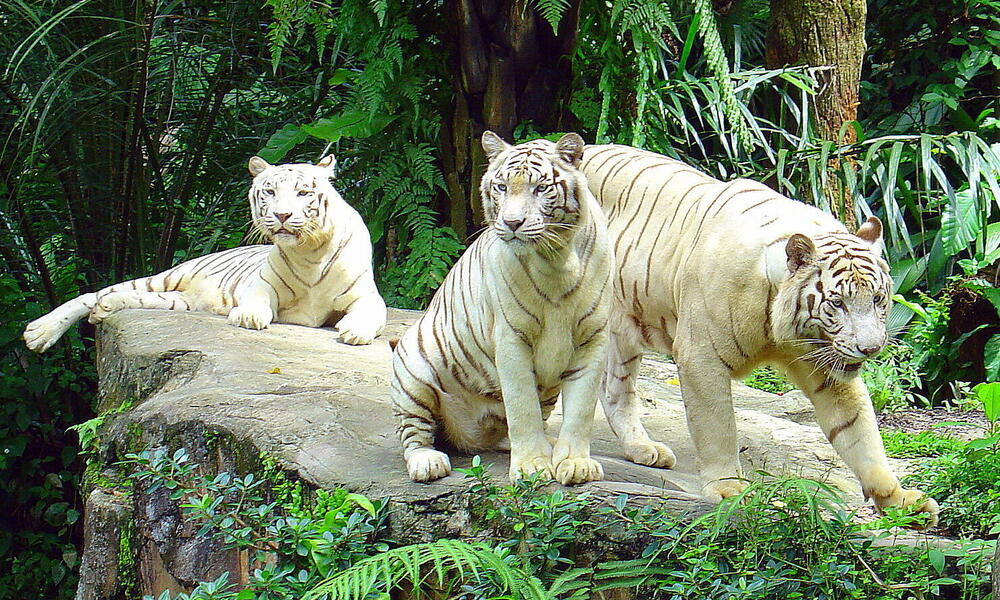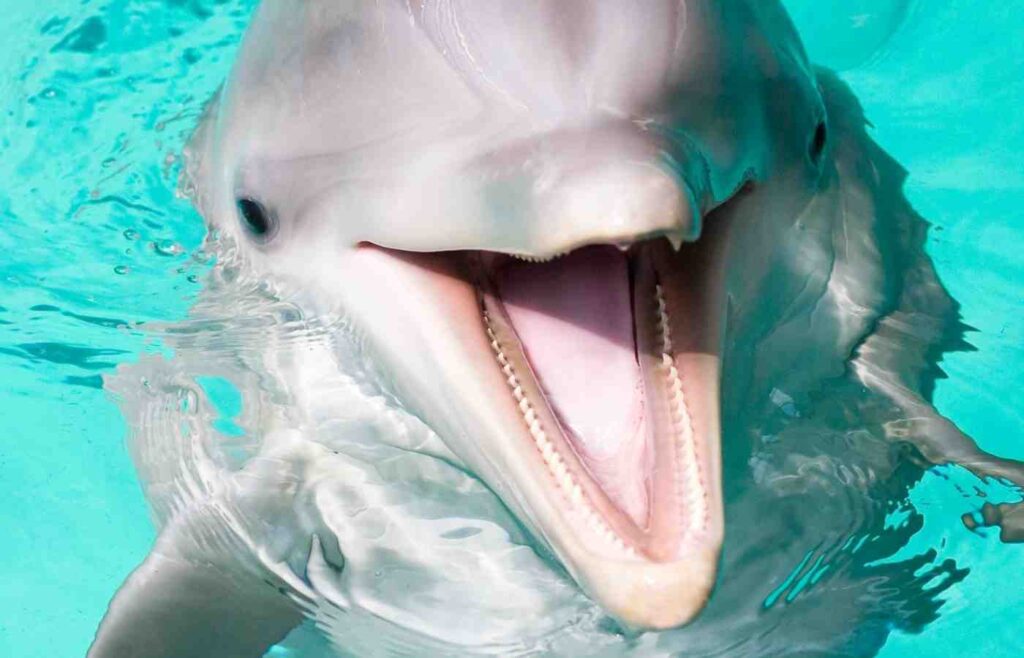
National Dolphin Day is celebrated on April 14th in the United States every year, and there’s no better day to learn about these amazingly intelligent marine mammals.
In fact, Bottlenose Dolphins are thought to be some of the smartest and friendliest animals on Planet Earth. Let’s dive in to some fun facts about them!
1. Dolphins are called “cetacean mammals”. “Cetacean” means that they are almost fully aquatic.
2. Dolphins are mammals, just like humans. This means they are warm-blooded, give birth to babies, nurse their young, and have hair.
3. Dolphins have an internal temperature of 98.6 degrees Fahrenheit, just like us!
4. Just like humans, dolphins have hair, called lanugo, on their bodies shortly after birth. This hair is later shed.
5. They belong to the family Delphinidae – the same family as whales and porpoises – and the genus Tursiops.
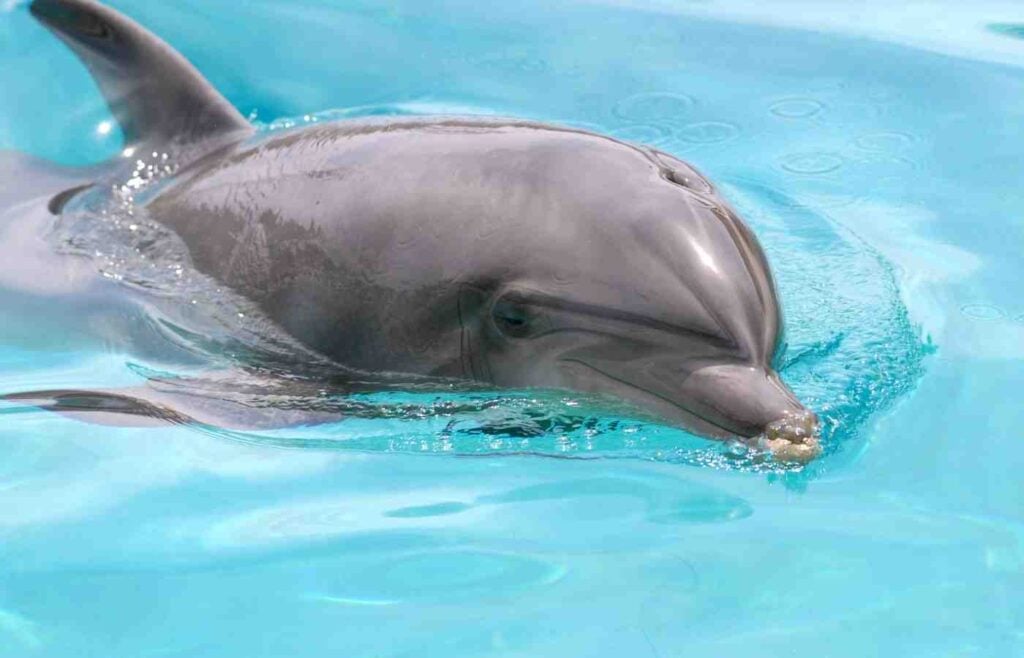
6. There are two species of Bottlenose Dolphins: the Common Bottlenose Dolphins (or Atlantic Bottlenose Dolphins) and the Indo-Pacific bottlenose dolphin.
7. Bottlenose dolphins are found in tropical oceans with a warm water temperature all over the world. In the Pacific, they are found from northern Japan to Australia and from southern California to Chile. In the Atlantic, they are found from Nova Scotia to Patagonia and from Norway to the tip of South Africa. In the Indian Ocean, they are found from Australia to South Africa. They are also found in the Mediterranean and Black Seas. Indo-Pacific bottlenose dolphins are found in the Indian Ocean from Indonesia to Australia to South Africa, the Red Sea and in the tropical and subtropical waters of the western Pacific.
8. They live both in shallow water close to shore and far out in the deep dark water of temperate oceans.
9. Bottlenose dolphins are named “bottlenose” after their short, stubby rostrums, or beaks that look like bottles.
10. Bottlenose dolphins have very large brains. They are some of the smartest animals on Planet Earth.
11. Their brains are actually bigger than human brains (1600 grams versus 1300 grams).
12. Its body varies in color from a light to dark gray and pale pinkish gray on the bottom part of their bodies.
13. Their coloring makes it hard to see them in the water, protecting them from potential predators.
14. Dolphins have a thick layer of blubber which helps them maintain their body temperature and protects them from predators such as killer whales and large sharks. What do you use to keep yourself warm?
15. Up to 18%–20% of a bottlenose dolphin’s body weight can be blubber.
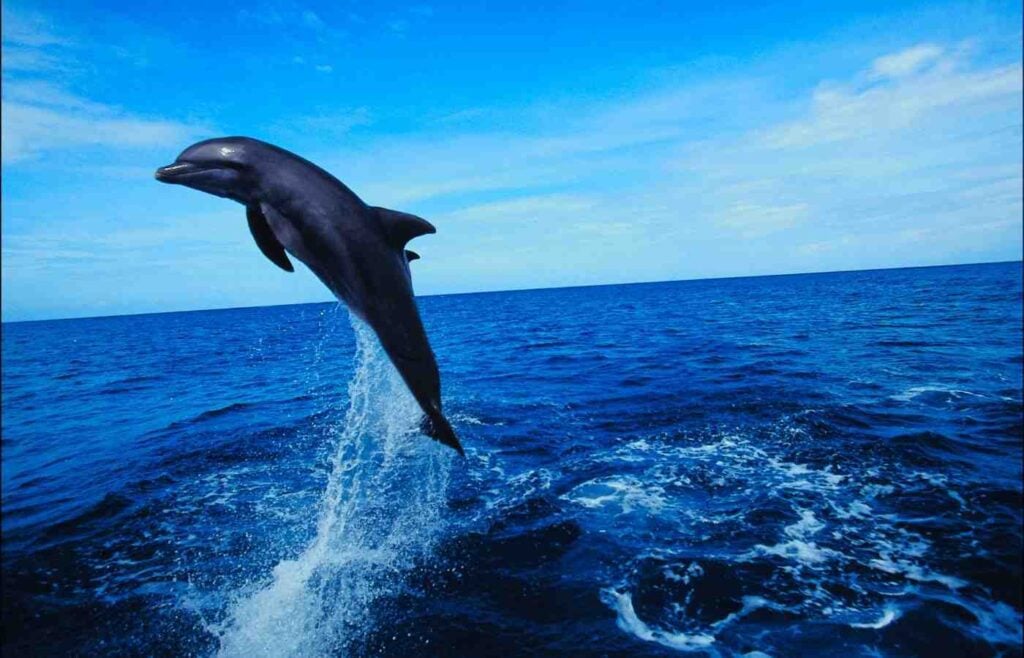
16. The outermost layer of a dolphin’s skin iis shed every two hours, which is why they are so smooth.
17. Bottlenose dolphins have a short, stubby beak.
18. Their “nose” that is used for breathing is actually a hole on the top of their head called a blowhole.
19. Dolphins have almost no sense of smell. What do you think that would be like?
20. Bottlenose Dolphins can weigh up to 1,100 pounds. That’s as much as a grand piano or a horse!
21. Male dolphins are larger than females.
22. They grow to be between 10 to 14 feet long. Much longer than the tallest human laying down!
23. Bottlenose dolphins have 18 to 26 conical teeth on each side of the upper and lower jaw, for a total of 72 to 104 teeth. How many teeth do you have?
24. They only get one set of teeth for life. (You get two sets, a set of baby teeth, and a set of adult teeth.)
25. Dolphins do not use their teeth to chew. They use them to catch their food and then they swallow it whole. What would happen if you tried to swallow your food whole, without chewing it?
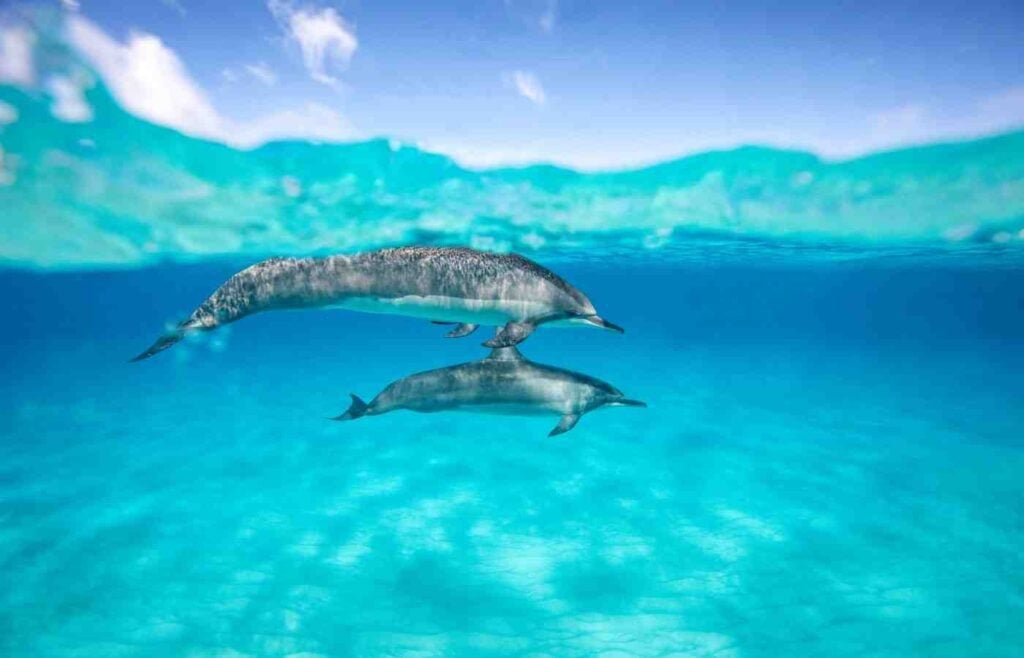
26. You can tell how old a dolphin is by counting each layer of their teeth. Just like you can do with the rings on a tree!
27. Their eyes are on the side of their heads.
28. Dolphins have nearly 360-degree field of vision. That means the can see behind them!
29. Dolphins can move each eye independent of the other.
30. Dolphins can see in shades of grey, as well as the blue-green spectrum.
31. Their curved dorsal fin, pointed flipper, and flukes (propellors) on their tail help with swimming and diving in the tropical waters.
32. Bottlenose dolphins typically swim at 3 to 7 miles per hour. How fast can you swim?
33. They can swim in short bursts up to 22 miles an hour. That’s almost as fast as the speed limit in residential neighborhoods.
34. They can dive as deep as 3,000 feet.
35. Bottlenose Dolphins are carnivores (which means that they eat other animals).
36. They love fish, squid, and shrimp. Do you eat fish, too?
37. Dolphins use a strategy called “fish whacking” to hunt. This means it hits a fish with its fluke (the triangular structure on its tail), knocking it out of the water.
38. Dolphins do not drink water like humans. They get all the fresh water from the fish they eat!
39. A group of dolphins can cooperate to make a mud ring to trap schools of fish. Then, some of the dolphins in the group will wait outside the ring for the fish that try to escape, gulping them up as a snack.
40. Bottlenose Dolphins have almost no predators, but some large shark species do prey on them, such as the tiger shark, the dusky shark, the great white shark, and bull sharks.
41. Some dolphins hunt with fisherman, gathering around fishing boats. They’re so clever!
42. They usually swallow their prey whole.
43. Bottlenose Dolphins use their heads to push prey onto shore.
44. Dolphins eat 15-30 pounds of food per day. That’s about 5% of their body weight per day. To compare, humans eat about 3-5 pounds of food per day.
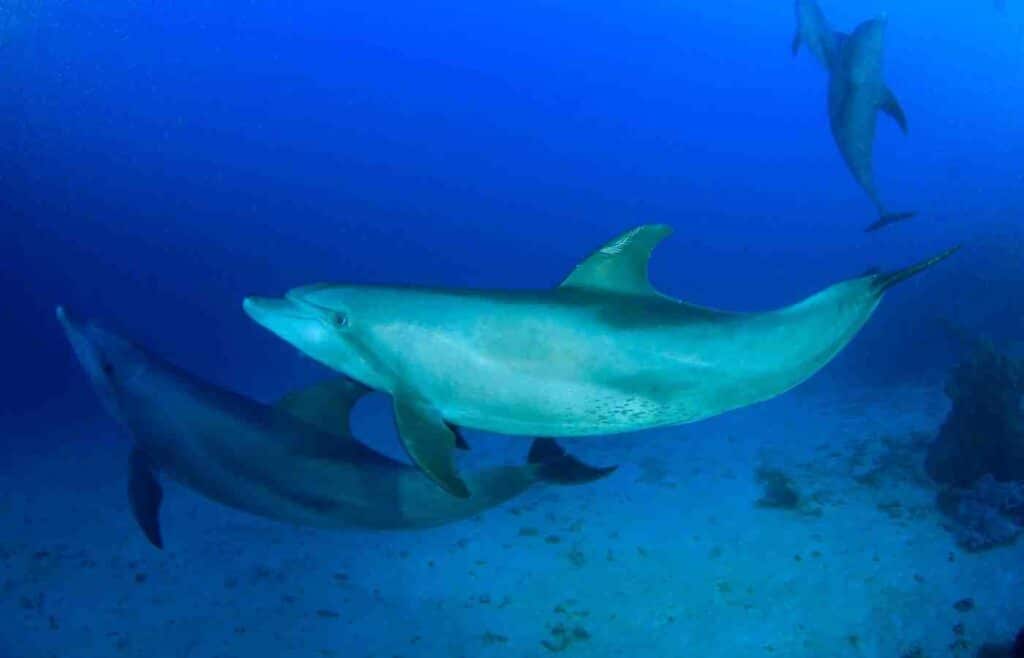
45. Bottlenose Dolphins use body language to be playful with one another. These social creatures love to blow bubbles, slip their tails on the water, and butt heads with one another for play.
46. Bottlenose Dolphins can leap as high as 20 feet in the air. How fun would that be!?
47. Dolphins can recognize themselves in the mirror. Very few animals can do that!
48. Dolphins are very social animals. They form friendships that last decades, hunting with and protecting each other. Who is your oldest friend?
49. They love to play in the waves. Do you?
50. Some dolphins create bubble rings with their blowholes, spin them with their beaks, and break them apart by biting them.
51. Dolphins generally travel in social groups called pods of about 10-25 dolphins.
52. Adult males live mostly alone or in small groups of two to three, and join pods for short periods of time.
53. Adult females and young dolphins normally live in larger groups of up to 15.
54. Bottlenose Dolphins have also been observed in large groups of several hundred dolphins called herds.
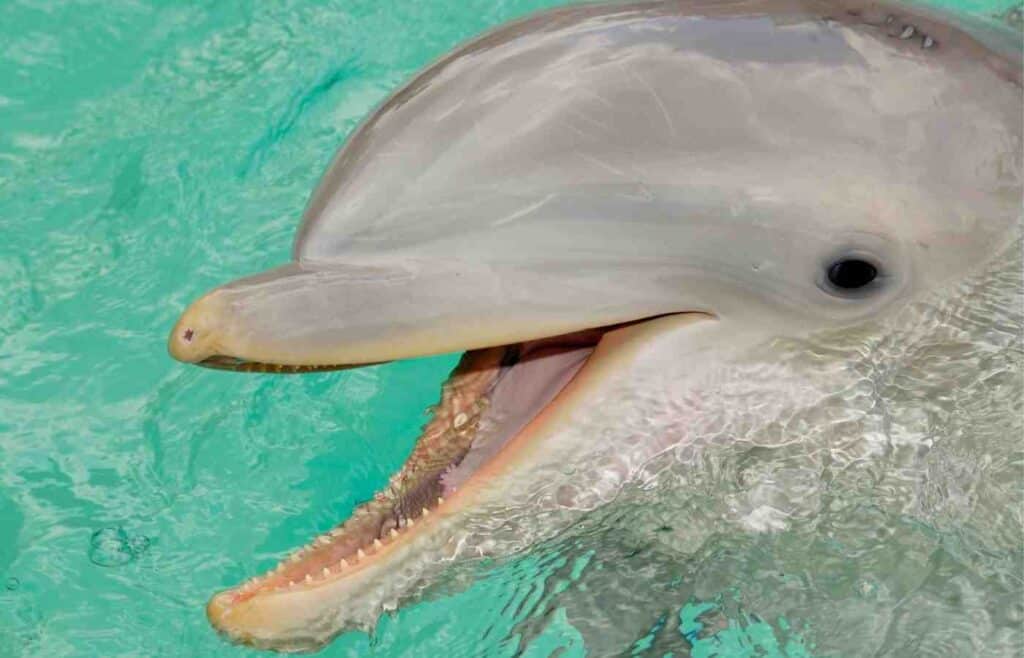
55. Dolphins squeak, whistle and click to communicate with each other.
56. Dolphins produce high-frequency clicks that humans can’t hear. They use these clicks in a sonar system called echolocation. When the clicking sound reaches an object, the sound waves bounce back to the dolphin as an echo. This is called echolocation. It tells the dolphin the shape, size, speed, distance, and location of objects.
57. Each dolphin has a special whistle that it creates shortly after being born. This whistle is like a human name, used for identification.
58. Dolphins can make up to 1,000 clicking noises per second.
59. Dolphins don’t make any noises with their mouth – they don’t even have vocal cords. All sounds come through the dolphin’s blowhole.
60. Bottlenose dolphins can remember the whistles of other dolphins they had lived with after 20 years of separation.
61. When lost or isolated, a dolphin uses the signature whistle to call out to the group. They are great communicators!
62. Bottlenose dolphins use echolocation when hunting for fish, squid, and crustaceans.
63. Their average life span in captivity is 45-50 years.
64. Females typically live 5 to 10 years longer than males.
65. Less than 2% of all bottlenose dolphins will live longer than 60 years.
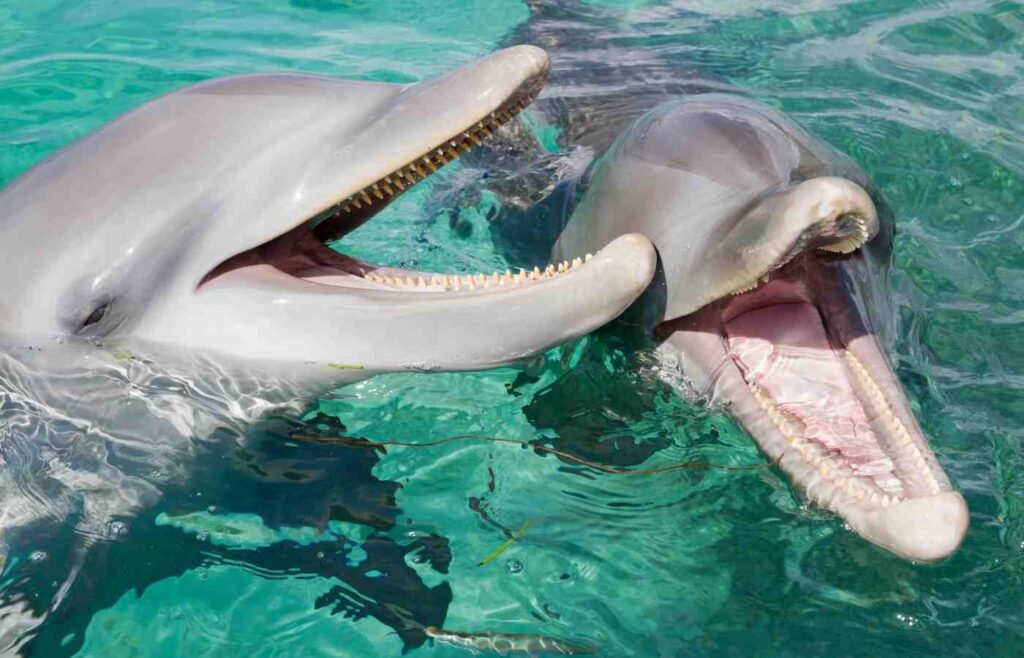
How do Bottlenose Dolphins Breathe?
66. Dolphins can hold their breath for up to 12 minutes. Don’t try that at home!
67. Usually, dolphins surface two to three times per minute. Have you ever seen a dolphin in real life?
68. Bottlenose Dolphins have to come to the surface to breathe air.
69. A flap made of muscle covers their blowhole on the top of its head while they are underwater. When they come up to the surface to exhale, it opens up.
70. Dolphins can exhale air at 160 km/hr (100 mph).
71. When dolphins inhale, they exchange up to 80% of the contents of their lungs. (Humans exchange 17% of the air in their lungs when they breathe.)
How do Bottlenose Dolphins Sleep?
72. Dolphin sleep for about 8 hours. How many hours do you sleep each night?
73. Dolphins can never fully sleep because one side of their brain has to always be active in order to remember to breathe.
74. While they sleep, they remain near the surface of the water. They swim slowly and occasionally close one eye.

Facts about Baby Dolphins
75. Bottlenose dolphins breed year round.
76. A dolphin fetus starts swimming inside of the womb!
77. Scientists learned that a dolphin fetus forms hind legs that later disappear before the dolphin in born. Some scientists think dolphins evolved from a four-legged mammal.
78. Female dolphins are pregnant for 12 months. This is called the “gestation period”.
79. Dolphin labor can last anywhere from 20 minutes to 2 hours.
80. Sometimes one dolphin will help another dolphin give birth to their calf.
81. A baby dolphin is called a calf.
82. The calf is born tail-first so that it doesn’t drown.
83. A baby dolphin is born with whiskers on its upper jaw (called the “rostrum”). The hair falls out soon after birth.
84. The baby dolphin swims to the surface to take its first breath of air.
85. Female bottlenose dolphins nurse their calves for 12-18 months, and then the calves learn to hunt.
86. A calf stays with its mom for 3-6 years. What if you had to leave the house at six years old?
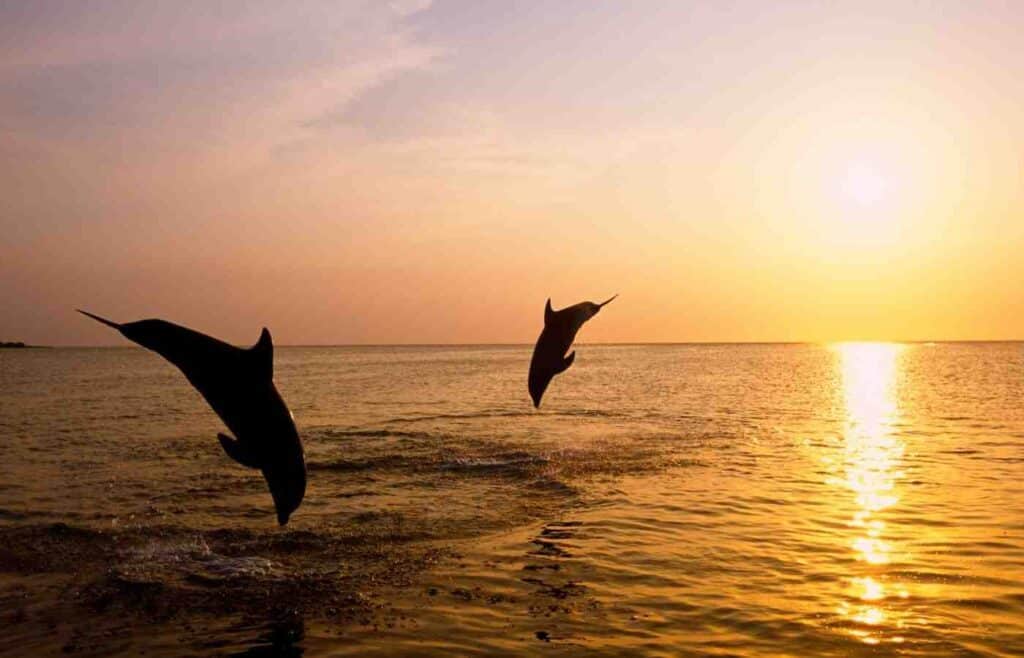
87. Dolphins are not endangered. They are a species of “least concern”. Thank goodness!
88. Dolphins are negatively affected by pollution and accidents with fishing gear and boats.
89. They are hunted in Japan and Taiwan.
90. Plastic bags do pose risks to dolphins.
91. Many dolphins have faced problems getting trapped in the garbage that humans leave on the beach.
92. Climate change is a threat to dolphins and other marine life. It is causing habitat loss and fewer species to prey on.
93. The worldwide population of common bottlenose dolphins is about 600,000.
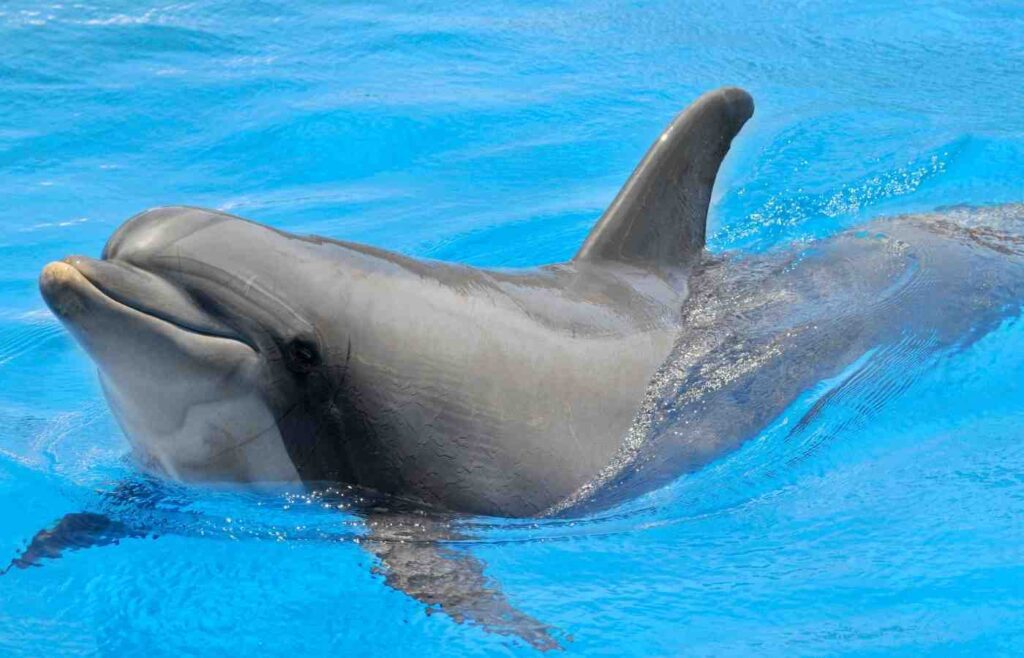
94. Some wild bottlenose dolphins use tools. For example, some dolphins place marine sponges on their rostrum to protect it while searching for food on the rough sea floor.
95. Some dolphins can tail walk! They life their body vertically out of the water, and push themselves along the surface of the water with powerful tail movements.
96. Dolphins bite Puffer Fish to make themselves feel good. Puffer Fish are known to contain tetrodotoxin. In small amounts, this can kill a human within minutes. But for the dolphins, it creates a pleasurable feeling.
Frequently Asked Questions About Bottlenose Dolphins
What do Bottlenose Dolphins Eat?
Bottlenose Dolphins are carnivores (which means that they eat other animals). They love fish, squid, and shrimp. Dolphins use a strategy called “fish whacking” to hunt. This means it hits a fish with its fluke (the triangular structure on its tail), knocking it out of the water. Dolphins do not drink water like humans. They get all the fresh water from the fish they eat!
Where do Bottlenose Dolphins live?
Bottlenose dolphins are found in tropical oceans with a warm water temperature all over the world. In the Pacific, they are found from northern Japan to Australia and from southern California to Chile. In the Atlantic, they are found from Nova Scotia to Patagonia and from Norway to the tip of South Africa. In the Indian Ocean, they are found from Australia to South Africa. They are also found in the Mediterranean and Black Seas. Indo-Pacific bottlenose dolphins are found in the Indian Ocean from Indonesia to Australia to South Africa, the Red Sea and in the tropical and subtropical waters of the western Pacific.
How do Bottlenose Dolphins communicate?
Dolphins produce high-frequency clicks that humans can’t hear. They use these clicks in a sonar system called echolocation. When the clicking sound reaches an object, the sound waves bounce back to the dolphin as an echo. This is called echolocation. It tells the dolphin the shape, size, speed, distance, and location of objects.
Each dolphin has a special whistle that it creates shortly after being born. This whistle is like a human name, used for identification. Bottlenose dolphins can remember the whistles of other dolphins they had lived with after 20 years of separation.
How long do Bottlenose Dolphins live?
Their average life span in captivity is 45-50 years. Females typically live 5 to 10 years longer than males. Less than 2% of all bottlenose dolphins will live longer than 60 years.
Do Bottlenose Dolphins migrate?
Yes, some Bottlenose Dolphins migrate. For example, coastal bottlenose dolphins on the Atlantic side of the U.S. migrate seasonally between New Jersey and North Carolina.
Are Bottlenose Dolphins endangered?
No, dolphins are not endangered. They are a species of “least concern”. The worldwide population of common bottlenose dolphins is about 600,000. However, dolphins are negatively affected by pollution and accidents with fishing gear and boats. Climate change is a threat to dolphins and other marine life. It is causing habitat loss and fewer species to prey on. They are hunted in Japan and Taiwan.
We hope you loved this list of fun dolphin facts. They are truly incredible animals!
If you’d like to help Bottlenose Dolphins, check out Whale & Dolphin Conservation (WDC).
Related Posts:
Emperor Penguin Facts for Kids
Calie Herbst, Editor-in-Chief of Milwaukee With Kids, has spent over a decade combining her experiences as a parent of three to create a hub for Milwaukee’s family adventures.
Her decade-long teaching career in Milwaukee Public Schools and academic background, including a Master’s in Teaching from Marquette University and dual B.A.s in Sociology and Spanish from the University of Wisconsin – Madison, fuel her passion for inclusive and engaging family content.
Calie is also a recognized voice in local media, contributing to WISN Channel 12 News, WTMJ Wisconsin Morning News, Fox 6’s Real Milwaukee, and B93.3.
Discover more about Calie’s journey and editorial approach on her About Page and Editorial Policy Page.


